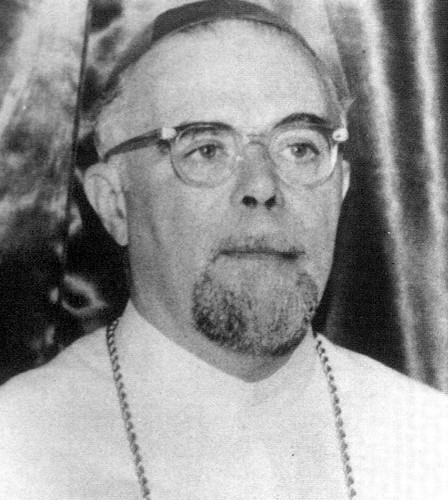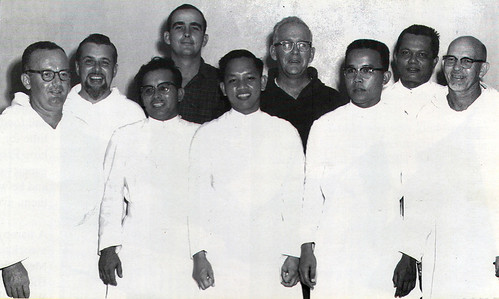History of the order in Guam
The first religious congregation to staff the Father Duenas Memorial School and Minor Seminary—members of which are commonly called Stigmatine priests, was founded in Verona, Italy, in 1816 by St. Gaspar Bertoni. Bertoni’s vision for his followers was for them to be apostolic missionaries under the guidance of the bishops of the places in which they served. In 1905, the Stigmatines established their first American Province in Pennsylvania. Soon after, they took up their work in Waltham, Massachusetts, in the Archdiocese of Boston, and later declared it their headquarters in America. Today, Stigmatines work in a number of countries all over the world.
Baumgartner wanted a seminary in Guam
It was the fervent desire of Bishop Apollinaris Baumgartner, OFM Cap., to open a seminary in Guam for the education of the island’s future Catholic priests. He needed qualified priests to staff the seminary, so he inquired with the Archbishop of Boston, Richard Cardinal Cushing. The archbishop suggested that he contact the Stigmatines in Waltham, and in time, they agreed to come to Guam.
The first five to arrive in September 1948 were Fathers Charles Egan, Leo James Geraci, Gerald Goggin, Joseph Morgan, and Ellsworth Fortman. Stigmatines who came later included Fathers Paul Daly, Daniel Cernauskas, Louis Antonelli, Robert Keniston, Joseph Mantia, John Ford, Henry Linse, Nicholas Spagnolo, and Charles Sinesi. The first superior of the community was Father Morgan, succeeded by Father Goggin and then, Father Sinesi.
Named after Father Duenas
Bishop Baumgartner named the seminary in honor of Father Jesus B. Duenas, Guam’s fallen World War II hero, who had been beheaded by Japanese armed forces in Ta’i, Mangilao, on 12 July 1944. The original school was housed in Quonset huts, but by 1951, a concrete building with latte shaped columns was completed. The school is situated near the place where its namesake is believed to have been slain.
At the heart of the mission of the seminary was the education of future priests. Day students who did not intend to become priests were admitted only if they passed a rigorous entrance examination. In addition to four years of high school, the school offered two years of junior college to all and, specifically for the seminarians, the standard, three-year college program in the classics and philosophy to prepare them for their major seminary studies of four years of theology in the US mainland.
The seminarians, who in some years numbered in the 30s, lived on the Ta’i campus with the Stigmatines. Father Fortman was specifically in charge of the seminarians as rector; he was succeeded by Father Antonelli.
Passed on to the Capuchin Friars
The Stigmatines worked in Guam for 11 years, teaching at the school, running the minor seminary, and assisting island parishes as needed on weekends. The congregation left the island in the summer of 1959, and the administration of Father Duenas Memorial School and Minor Seminary passed into the hands of the Capuchin Friars. Father (now Monsignor) Antonelli later returned to the Marianas to serve as a diocesan priest in Rota.
For further reading
A Tribute to St. Gaspar Bertoni. “Founder of the Stigmatine Congregation.” 6 July 2021.
Baumgartner, Apollinaris W. History of the Catholic Education in the Marianas. Hagåtña: Catholic Church, Diocese of Agana, 1968.
Congregation of the Sacred Stigmata. “About Us.” 6 July 2021.
Father Dueñas Memorial School. “History.”
Sullivan, Julius, OFM Cap. The Phoenix Rises: A Mission History of Guam. New York: Seraphic Mass Association, 1957.



